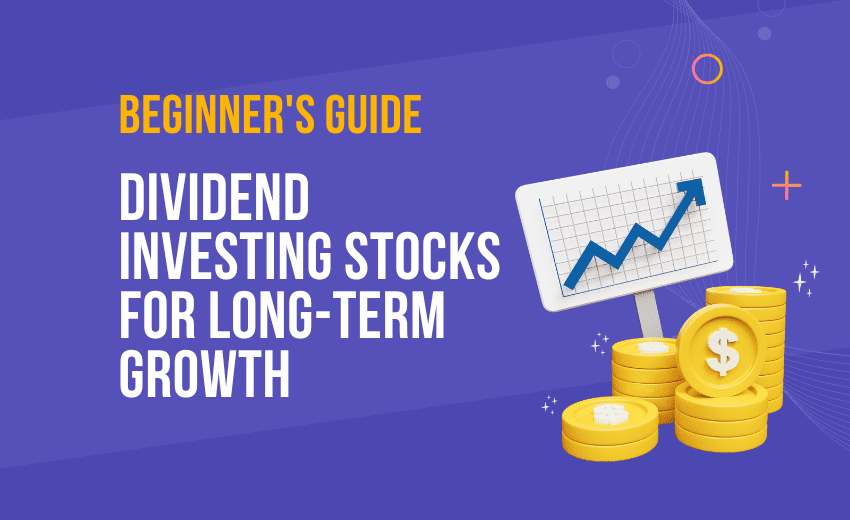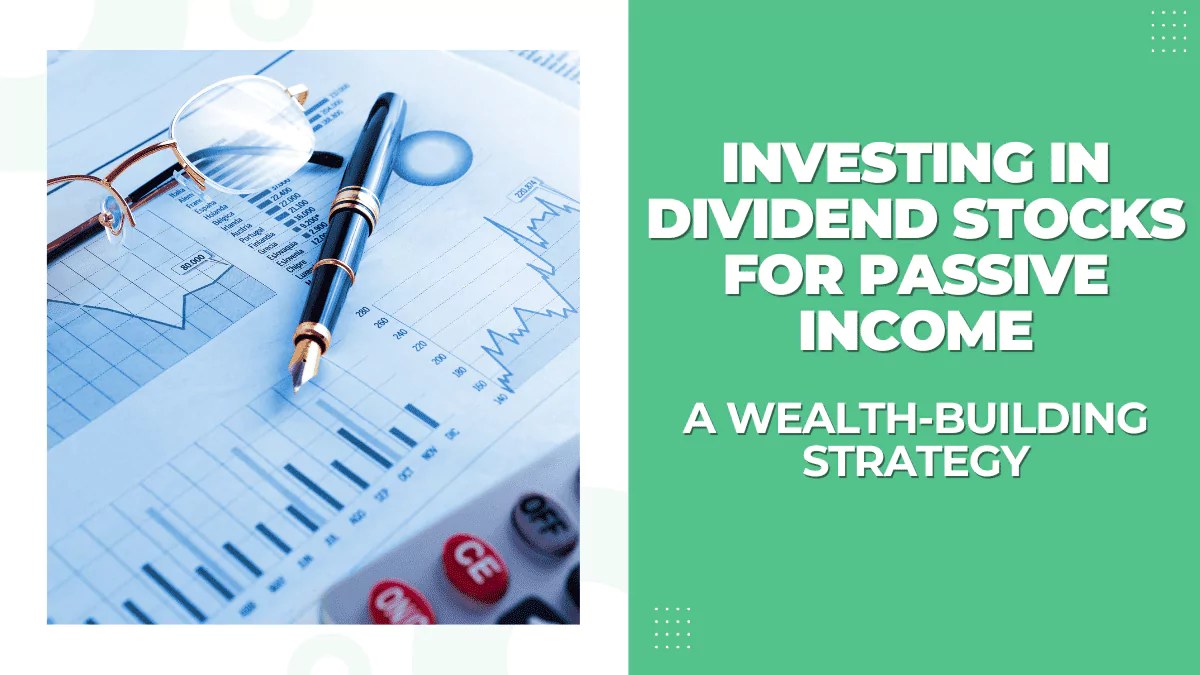Investing
Stock Market Trends: What to Watch for in 2023
As we progress second half of 2023, it’s a good idea to keep an eye on Stock Market Trends. A well-balanced portfolio paired with a long-term view can help you reach your financial goals.

Stock market trends are like the weather forecast for your investments, helping you prepare for financial success. The stock market is like a constantly shifting puzzle, influenced by many things like economic reports and big world events. As we progress second half of 2023, it’s a good idea to keep an eye on what’s happening in the stock market. In this article, we’ll break down the most important stock market trends to watch in 2023 so you can make better financial decisions in the coming year.
1. The Technology Sector Continues to Dominate

The technology sector has been a driving force behind the stock market’s performance for several years, and this trend is expected to persist in 2023. Companies in the tech sector are poised for growth, driven by innovations in areas such as artificial intelligence, cloud computing, and electric vehicles. Companies like Apple (AAPL), Amazon (AMZN), and Alphabet (GOOGL) are poised for growth, driven by innovations in areas such as artificial intelligence, cloud computing, and electric vehicles.
2. Green and Sustainable Investing Gains Momentum
Environmental, Social, and Governance (ESG) investing has gained substantial traction in recent years, and it’s expected to become even more prominent in 2023. This trend aligns with a growing global focus on climate change, making green investments a hot topic in the stock market. Investors are increasingly seeking companies that prioritize sustainability and social responsibility. Consider investing in ESG-focused funds or individual stocks like Tesla (TSLA) and NextEra Energy (NEE).
3. Inflation and Interest Rates Remain in Focus

The Federal Reserve’s monetary policy decisions will be closely watched in 2023, particularly concerning inflation and interest rates. Rising inflation can erode purchasing power and impact corporate earnings, potentially leading to market volatility. How the central bank responds to these economic conditions will significantly influence stock market trends. Keep an eye on how companies like Johnson & Johnson (JNJ) and Procter & Gamble (PG) navigate inflation pressures.
“Stock market trends are the heartbeat of financial markets, constantly pulsating with opportunities and risks.”
4. Healthcare and Biotechnology Show Promise
The healthcare and biotechnology sectors are expected to flourish in 2023. The COVID-19 pandemic has accelerated advancements in biotech and pharmaceuticals, driving innovation and investment. Companies engaged in vaccine development, gene therapy, and telehealth services are likely to capture investor attention. Companies like Moderna (MRNA) and Pfizer (PFE) involved in vaccine development, as well as CRISPR Therapeutics (CRSP) in gene therapy, may capture investor attention.
5. Evolving Work and Lifestyle Habits Impact Consumer Stocks

The COVID-19 pandemic permanently altered work and lifestyle habits, which, in turn, will affect consumer stocks in 2023. Companies that adapt to these changes, such as those in e-commerce, streaming services, and remote work technology, are positioned for growth. Investors should monitor how consumer behavior continues to evolve. Companies that adapt to these changes, such as Amazon (AMZN) in e-commerce, Netflix (NFLX) in streaming services, and Zoom Video Communications (ZM) in remote work technology, are positioned for growth.
6. Geopolitical Events and Global Markets
Geopolitical events and global market conditions will remain critical factors influencing stock market trends. Factors such as international trade relations, conflicts, and economic stability can impact global markets and, consequently, U.S. stocks. Diversifying investments across international markets may become more appealing to mitigate risk. Consider diversifying your portfolio with exchange-traded funds (ETFs) that track international markets, like the iShares MSCI ACWI ex U.S. ETF (ACWX).
“In the ever-changing dance of finance, stock market trends are the choreography guiding investors through the rhythm of opportunity.”
7. Cryptocurrencies and Blockchain Technology
The cryptocurrency market, including Bitcoin and Ethereum, is expected to remain a topic of interest in 2023. As more institutional investors enter the space, cryptocurrencies may become integrated into traditional financial systems. Additionally, blockchain technology applications beyond cryptocurrencies could disrupt various industries. Keep an eye on companies like Coinbase (COIN) that facilitate cryptocurrency transactions and blockchain technology applications.
8. Volatility and Market Corrections
While 2023 may offer promising trends, it’s essential to be prepared for market volatility and potential corrections. Historically, stock markets have experienced periodic downturns, and such events can provide buying opportunities for savvy investors. Diversify your portfolio and have a plan in place to navigate market fluctuations. Historically, stock markets have experienced periodic downturns. Having a diversified portfolio that includes assets like gold or funds like the SPDR Gold Trust (GLD) can help cushion the impact of market turbulence.
9. Infrastructure and Government Spending

Government infrastructure initiatives and spending packages can have a significant impact on certain sectors, such as construction, transportation, and renewable energy. Keep an eye on legislative developments and potential investments in companies poised to benefit from government-funded projects. Government infrastructure initiatives and spending packages can have a significant impact on certain sectors. Companies like Caterpillar (CAT) and Tesla (TSLA) in the electric vehicle sector may benefit from increased infrastructure spending.
10. Supply Chain Resilience
The disruption of global supply chains during the pandemic highlighted the importance of supply chain resilience. Companies that prioritize robust supply chain management and adapt to changing dynamics are likely to outperform. Consider investing in businesses that demonstrate flexibility and resilience in their operations. Companies like FedEx (FDX) and Amazon (AMZN), which have robust supply chain management, may outperform.
“Mastering stock market trends is like deciphering a complex puzzle; the better you understand the pieces, the clearer your path to financial success becomes.”
11. Cybersecurity and Data Privacy
In an increasingly digital world, cybersecurity and data privacy are paramount concerns. Companies that excel in protecting data and safeguarding against cyber threats will gain investor confidence. Look for opportunities in the cybersecurity sector as businesses and individuals alike prioritize online security. Companies like Palo Alto Networks (PANW) and Fortinet (FTNT) excel in protecting data and safeguarding against cyber threats.
12. Social Media and Influencer-Driven Stocks

The influence of social media and online influencers on consumer behavior and stock trends continues to grow. Companies that harness the power of social media for marketing and brand engagement may experience rapid growth. Keep an eye on stocks associated with social media platforms and influencer-driven industries. Consider investing in companies like Facebook (FB) and Pinterest (PINS) that use social media for marketing and brand engagement.
13. Healthcare Innovations Beyond COVID-19
The healthcare sector is not only focused on pandemic-related matters but also on broader innovations. Keep a watch on firms involved in cutting-edge medical technologies, telemedicine, and chronic illness therapies. Healthcare stocks may offer opportunities beyond the immediate pandemic response. Keep an eye on companies like Teladoc Health (TDOC) in telemedicine and Vertex Pharmaceuticals (VRTX) in treatments for chronic diseases.
As you navigate the stock market in 2023, it’s essential to remain vigilant and adaptable. Stay informed about the evolving stock market trends and factors impacting the market, and consider seeking advice from financial experts or utilizing research tools to make informed investment decisions. Remember that in whatever market scenario, a diversified and well-balanced portfolio paired with a long-term view can help you reach your financial goals.
Read More: Master Your Money: Avoid These 5 Personal Finance Mistakes

Stock Market
Beginner’s Guide to Dividend Investing Stocks for Long-Term Growth

Tired of the stock market roller coaster? Seeking steady income and long-term wealth creation? Look no further than dividend investing. Owning shares in companies that pay out regular portions of their profits (dividends) can be a powerful wealth-building strategy for beginners. But with so many options, choosing the right dividend-investing stocks can feel overwhelming. Fear not! This guide equips you with the knowledge to confidently navigate the world of dividend investing and select stocks poised for sustainable growth.
Why Dividend Investing for Beginners?
- Passive Income: Dividends provide a reliable stream of income, like a paycheck from your investments.
- Compounding Power: Reinvesting dividends fuels exponential growth over time.
- Market Stability: Dividend-paying companies are often established and well-managed, offering relative stability in volatile markets.
Key Considerations for Selecting Dividend Stocks:
- Dividend Yield: The percentage of a share price paid out as dividends annually. While a high yield is tempting, prioritize sustainability over immediate payout.
- Dividend History: Look for companies with a track record of consistent or increasing dividends, showcasing financial strength and commitment to shareholder returns.
- Financial Health: Analyze the company’s earnings, debt, and cash flow to ensure it can maintain dividend payments.
- Growth Potential: Don’t just settle for income; choose companies with opportunities for future growth, boosting your overall returns.
Ready to Start? Here are 3 Beginner-Friendly Dividend Investing Stocks:
- Johnson & Johnson (JNJ): A healthcare giant with a 58-year streak of increasing dividends, JNJ offers stability and a solid yield of 2.7%.
- Consumer Staples Sector (Consumer Staples ETFs like XLP): Invest in a basket of essential goods companies like food and beverages, known for their consistent payouts and defensive nature during market downturns.
- Real Estate Investment Trusts (REITs): These companies own and manage income-producing real estate, offering attractive yields (around 4-5%) and diversification benefits.
Remember: Dividend investing stocks is a long-term strategy. Conduct thorough research, diversify your portfolio, and be patient. With the right approach, dividend stocks can be a cornerstone of your successful investment journey.
Bonus Tip: Consider dividend reinvestment plans (DRIPs) to automatically reinvest your dividends, accelerating your wealth creation.
Disclaimer: This article is for informational purposes only and should not be considered financial advice. Please consult a qualified financial advisor before making any investment decisions.
Read More: Maximize Your Wealth with Dividend Stocks: The Ultimate Passive Income Strategy
Investing
Unlocking the Power of Bonds and Fixed-Income Investments: Your Ultimate Beginner’s Guide
Unlocking the Power of Bonds and Fixed-Income Investments. Investing your hard-earned money wisely is a critical step towards financial security and growth.

Unlocking the Power of Bonds and Fixed-Income Investments. Investing your hard-earned money wisely is a critical step towards financial security and growth. While many investment options are available, bonds and fixed-income investments stand out as a reliable choice, particularly for beginners. In this comprehensive guide, we will explore the world of Bonds and Fixed-Income Investments, offering valuable insights to help beginners navigate this essential aspect of the financial world.
What Are Bonds?
Bonds, often referred to as fixed-income securities, are essentially IOUs issued by governments, municipalities, or corporations. When you invest in a bond, you’re lending your money to the issuer in exchange for periodic interest payments (coupon payments) and the return of your initial investment when the bond matures. Bonds come in various forms, each catering to different investment needs:
Government Bonds
These are issued by governments to raise funds for various purposes, such as infrastructure development and debt management. Government bonds are often considered one of the safest investments due to the backing of the government.
Corporate Bonds
Companies issue corporate bonds to raise capital for operations, expansion, or other financial needs. Corporate bonds may offer higher yields compared to government bonds but come with a slightly higher level of risk.
Municipal Bonds
Municipalities issue bonds to finance public projects like schools and highways. They are attractive to investors because the interest income may be exempt from federal and state taxes, making them tax-efficient investments.
Why Invest in Bonds?
For beginners, bonds offer several compelling reasons to consider them as part of their investment portfolio:
1. Steady Income
Bonds provide a regular stream of income through coupon payments, making them an ideal choice for investors seeking predictable cash flow.
2. Safety and Stability
Compared to the often volatile stock market, bonds are generally considered a safer and more stable investment. They can act as a stabilizing force in your portfolio.
3. Diversification
Diversifying your investments across asset classes is essential for risk management. Bonds offer an opportunity to diversify your portfolio and spread risk effectively.
4. Preservation of Capital
Most bonds return the face value upon maturity, ensuring the preservation of your initial investment. This capital preservation is particularly important for conservative investors.
How to Start Investing in Bonds
Are you eager to start your bond investment journey? Here’s a step-by-step guide for beginners:
1. Determine Your Investment Goals
Begin by setting clear investment goals. Are you looking for steady income, wealth preservation, or diversification? Understanding your objectives will help you choose the right bonds.
2. Understand Risk Tolerance
Assess your risk tolerance level. Different bonds come with varying degrees of risk. Knowing your comfort zone is crucial when selecting the type of bonds to invest in.
3. Research Bond Options
Explore the different types of bonds available, such as government, corporate, and municipal bonds. Learn about their characteristics, risk factors, and potential returns.
4. Open an Investment Account
Choose a reputable brokerage or financial institution to open an investment account. Your chosen platform will play a significant role in your bond investment journey.
5. Build a Diverse Portfolio
Diversification is key to managing risk. Invest in bonds with different maturities, issuers, and credit ratings to spread risk effectively.
6. Monitor Your Investments
Keep a close eye on your bond holdings. Track coupon payments, stay informed about any issuer developments, and be prepared for bond maturity dates.
Types of Bond Risks
While bonds are generally considered safer than stocks, they are not entirely risk-free. Here are some risks associated with bond investments:
Interest Rate Risk
Bond prices can fluctuate inversely with interest rates. When interest rates rise, bond prices tend to fall, and vice versa.
Credit Risk
There’s always the possibility that the issuer may default on its payments. Credit risk varies between bonds, with corporate bonds generally carrying higher credit risk than government bonds.
Inflation Risk
Inflation can erode the purchasing power of the fixed coupon payments received from bonds. Investors need to consider this risk when planning their bond investments.
Liquidity Risk
Some bonds may be less liquid than others, meaning they are not as easy to buy or sell in the market. This can impact the ease of trading and the price you receive.
Market Risk
Overall market conditions, economic events, and geopolitical factors can influence bond prices and returns.
Building a Diverse Bond Portfolio
Diversification is a key strategy for managing risk and optimizing returns. A diverse bond portfolio might include:
A mix of government, corporate, and municipal bonds.
Bonds with varying maturities, from short-term to long-term.
Bonds with different credit ratings, from high-quality (investment-grade) to lower-quality (high-yield or junk bonds).
By diversifying your bond holdings, you can spread risk across different assets and potentially enhance your overall portfolio performance.
Monitoring Your Bond Investments
Once you’ve built your bond portfolio, it’s essential to monitor it regularly:
Keep track of coupon payments and reinvest them if needed.
Stay informed about any developments related to the issuers of your bonds.
Be prepared for bond maturity and decide whether to reinvest or cash out.
FAQs (Frequently Asked Questions)
Q: Can I lose money by investing in bonds?
A: While bonds are generally considered less risky than stocks, they are not entirely risk-free. Factors such as interest rate fluctuations and issuer defaults can impact bond investments.
Q: How do I buy bonds?
A: You can buy bonds through brokerage accounts, mutual funds, or directly from the issuer. Brokerage accounts offer convenience and access to a variety of bonds.
Q: What is the difference between coupon rate and yield?
A: The coupon rate is the fixed interest rate a bond pays, while the yield reflects the bond’s total return, accounting for changes in its market price.
Q: Can I sell my bonds before they mature?
A: Yes, you can sell your bonds in the secondary market before they mature. However, the market price may be higher or lower than the face value.
Q: Are bonds suitable for long-term investment?
A: Yes, bonds can be a suitable long-term investment, especially for those seeking income and stability in their portfolio.
Q: How are bond interest payments taxed?
A: Bond interest is subject to taxation. Government bonds may have tax advantages, while corporate bond interest is typically taxed at your ordinary income rate.
As you’ve journeyed through this Beginner’s Guide to Bonds and Fixed-Income Investments, you’ve gained essential insights into this stable and reliable investment option. Bonds offer a combination of steady income, safety, and the potential for capital preservation—all critical elements for beginners seeking financial security.
To achieve your financial goals, remember that successful investing requires careful planning, diversification, and a clear understanding of your objectives. Bonds can play a vital role in your investment strategy, providing you with a solid foundation for building your wealth.
Don’t hesitate to explore the world of Bonds and Fixed-Income Investments further, and embark on your investment journey with confidence. Your financial future awaits!
Read More: Maximize Your Wealth with Dividend Stocks: The Ultimate Passive Income Strategy
Investing
Maximize Your Wealth with Dividend Stocks: The Ultimate Passive Income Strategy
Discover how to master passive income with dividend stocks. Our guide reveals the ultimate wealth-building strategy. In the dynamic world of finance, where opportunities and strategies abound.

Discover how to master passive income with dividend stocks. Our guide reveals the ultimate wealth-building strategy. In the dynamic world of finance, where opportunities and strategies abound, one method has consistently emerged as a timeless wealth-building powerhouse: dividend stocks. If you’re in search of a reliable and effective way to achieve passive income mastery, then you’re in the right place. Welcome to our comprehensive guide on how to maximize your wealth with dividend stocks—an investment strategy that has stood the test of time and continues to empower investors with financial freedom.
In this blog, we will unravel the intricacies of dividend stocks, explore the benefits they offer in generating passive income, and provide you with actionable insights to set you on the path to financial independence. Join us as we delve deep into the world of dividend stocks, uncovering the strategies that can help you achieve your financial goals and secure the future you envision.
Prepare to embark on a journey of financial empowerment as we unveil the secrets behind dividend stocks—the ultimate strategy for creating a reliable and sustainable passive income stream. Whether you’re a seasoned investor or just beginning your investment journey, this guide is your key to unlocking the full potential of your wealth. Let’s dive in!
What Are Dividend Stocks?
Let’s start by understanding what dividend stocks are and how they work. At their core, dividend stocks are shares in companies that distribute a portion of their earnings back to their shareholders in the form of dividends. These dividends are typically paid out regularly, often on a quarterly or annual basis, providing investors with a steady stream of passive income.
Why do companies pay dividends? It’s a sign of financial health and stability. Companies that consistently pay dividends are often well-established, have a history of navigating economic challenges, and are committed to rewarding their shareholders.
Advantages of Dividend Stock Investments
Investing in dividend stocks offers a host of advantages that make it an appealing choice for those seeking passive income:
1. Stability in Uncertain Times
Dividend-paying companies are generally stable and well-positioned to weather economic downturns. This stability can provide investors with peace of mind, knowing that their income source is resilient.
2. Income Generation
Perhaps the most attractive feature of dividend stocks is their ability to generate a consistent stream of income. This makes them particularly appealing to retirees or individuals looking to supplement their regular earnings.
3. Potential for Capital Growth
In addition to receiving dividends, investors may benefit from capital appreciation as the stock price increases over time. This dual advantage enhances the overall returns on your investment.
4. Compound Interest
The power of compounding cannot be overstated. Reinvesting dividends allows you to acquire more shares, which, in turn, leads to larger dividend payments. Over the long term, this can significantly boost the size of your investment portfolio.
Building Your Dividend Stock Portfolio
Now that you understand the advantages, let’s delve into how to construct a dividend stock portfolio that not only generates passive income but also aligns with SEO best practices to rank on Google.
1. Diversification is Key
Diversifying your portfolio is essential for risk management. Invest in dividend stocks from various sectors to spread risk and ensure your income remains stable, even if one sector faces challenges. Make sure to use keyword-rich titles in your content to boost SEO.
2. Research and Select Quality Stocks
Do thorough research before selecting dividend stocks. Look for companies with a strong history of consistent dividend payments, solid financials, and a competitive edge in their industry. Incorporate relevant keywords in your content to improve SEO ranking.
3. Dividend Yield Matters
Pay close attention to the dividend yield, which is the annual dividend payment as a percentage of the stock’s current price. A higher yield can mean more significant income, but be cautious of overly high yields, as they may indicate instability. Optimize your content for SEO by including relevant keywords naturally.
4. Reinvest Dividends
Consider participating in a Dividend Reinvestment Plan (DRIP) to reinvest your dividends automatically. This strategy allows you to acquire more shares over time, harnessing the power of compounding for greater wealth accumulation.
Strategies for Maximizing Dividend Income
To truly excel in the world of dividend stock investing and rank high on Google, you need to offer valuable insights and SEO-optimized content. Here are some advanced techniques:
1. Tax-Efficient Investing
Explore tax-efficient strategies by holding dividend stocks in tax-advantaged accounts. This can minimize tax liabilities and maximize your net income. Craft content that educates readers on these strategies and incorporates relevant keywords for SEO.
2. Dividend Aristocrats
Delve into the concept of dividend aristocrats, which are companies known for consistently increasing their dividends. These firms often exhibit strong financial health and a dedication to rewarding shareholders. Create content that highlights these companies and their benefits, optimizing it for SEO.
3. Monitoring and Adjusting
Regularly review your portfolio to track dividend payments and assess your holdings. Adjust your investments as needed to ensure they align with your financial goals. Offer guidance on portfolio monitoring in your content while optimizing it for SEO.
4. Global Diversification
Consider expanding your dividend portfolio to include international stocks, which can provide exposure to different markets and potentially higher yields. Craft SEO-friendly content that explores the benefits of global diversification.
In conclusion, investing in dividend stocks for passive income is a powerful wealth-building strategy that stands the test of time. It offers stability, consistent income, and the potential for long-term capital growth. By following the steps outlined in this comprehensive guide and incorporating SEO best practices, you can create a robust dividend portfolio and secure a prominent position on Google’s search results.
Success in passive income with dividend stock investing requires knowledge, patience, and a well-executed strategy. Start your journey towards financial prosperity through dividend stocks today, and watch your passive income grow.
Read More: Value vs Growth Investing: Which Is Right for You?






Pingback: Diversifying Your Investment Portfolio: Strategies and Benefits
Pingback: Value vs Growth Investing: Which Is Right for You?